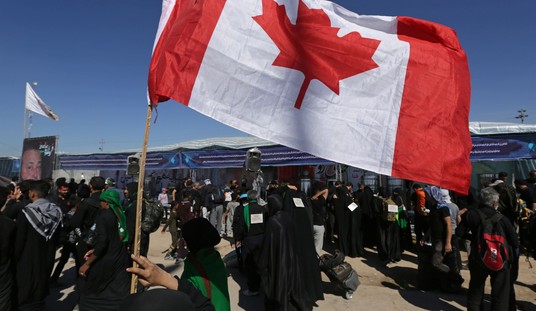While leaders on Capitol Hill thrash about on replenishing their own program to protect small-business workers, a bipartisan group in the Senate have begun work on Phase 4 of COVID-19 pandemic relief. The new focus for federal cash will fall on state and local governments that have seen revenue streams dry up as businesses shut down. Senators Bob Menendez (D-NJ) and Bill Cassidy (R-LA) have crafted a $500 billion bailout package that attempts to provide baseline cash while adjusting for both population and outbreak size.
Perhaps we should be surprised that the price tag is as low as it is. The ask matches that from the National Governors Association and is designed to quiet rising criticism from governors over the CARES Act, which only provided nominal funding in this direction:
A Republican and a Democrat in the Senate are proposing a $500 billion fund for state and local governments as part of the next comprehensive rescue package from Congress, to aid parts of the country reeling from the coronavirus pandemic. …
Menendez and Cassidy said they’re answering the call from the National Governors Association a week ago to establish a much larger “stabilization fund” for states.
Maryland Governor Larry Hogan, the NGA’s chairman, and New York Governor Andrew Cuomo, its vice-chairman, said on April 11 that without at least $500 billion, states would have to curtail essential services. The pair are Republican and Democrat, respectively.
The federal stimulus approved in March provides $150 billion for municipalities’ virus expenses but doesn’t address budget shortfalls and only helps states and cities with populations greater than 500,000. The Federal Reserve announced loans to states and only cities with over 1 million residents.
The “doesn’t address budget shortfalls” is a big red flag here, and what moves this from relief to a bailout. One can understand why the federal government would provide subsidies earmarked for COVID-19 abatement efforts. Not only are those resources urgently needed, they also involve a truly interstate issue — tamping down the spread of the pandemic from hot spots like New York, New Jersey, and Louisiana into less-hard-hit neighboring states. However, states’ budget crises are not a federal issue, especially to the degree in which they don’t have anything to do with the present crisis. Funding those actions puts taxpayers in more fiscally responsible states on the hook for budget decisions over which they have no control.
In the acute crisis, though, that argument won’t fly in either the Senate or the House. At least it’s not a repeal of the state and local tax (SALT) deduction cap, as some governors demanded. It’s a one-off, or at least we can hope so, and politically it’s almost impossible at the moment to deny the funds.
Axios and Bloomberg report that the money would go out in three tranches, in an attempt to spread the assistance widely while focusing on the greatest emergent needs:
- The first tranche would be allocated proportionally based on states’ percentage of the total U.S. population, with all states and D.C. set to receive at least $1.25 billion. Cities and counties with populations above 50,000 would also be eligible for specific aid.
- The second tranche would be allocated based on the state’s share of the total number of U.S. infections.
- The third would be based on the state’s loss of revenue resulting from shutdowns and stay-at-home orders.
This sounds reasonable in theory, but it sets up some interesting incentives. The first tranche is the most straightforward, simply based on the relatively fixed metric of population distribution. The second tranche gets more complicated, however; at what point will Congress measure percentage of total infections? Does it count “recovered” infections or only active cases? Do we count all infections, starting back to the beginning of March, or only those identified at or after the passage of the bill? There are good arguments either way, but given that this bill is sponsored by senators from two hot spots, I’m guessing that it will count all cases from the beginning of time for splitting funds. That will leave states on the upswing of cases with perhaps fewer resources to prepare, relatively speaking at least.
The conditions on the third tranche are even more curious. Like it or not, responsive or not, that incentivizes governors to issue more draconian measures. There are obvious counterincentives in play as well — we’re starting to see them now — but the incentive for harsher shutdown parameters undeniably exists. (And for that matter, the second tranche also seems like a bit of a reward for jurisdictions that acted irresponsibly lax in the beginning, like New York City and New Orleans.) Here too, this looks like a way to get more cash to the Northeast and Michigan especially.
Finally, don’t expect this to remain at $500 billion once Nancy “Ice Cream” Pelosi takes a whack at it. While Congress remains out of session, Pelosi will press to add in all sorts of spending from her 2020 agenda, including carveouts for SEIU and AFSCME, if she doesn’t succeed in getting them while replenishing the Paycheck Protection Program. This is nothing more than a $500 billion springboard from which Congress will go off the deep end, eventually.








Join the conversation as a VIP Member